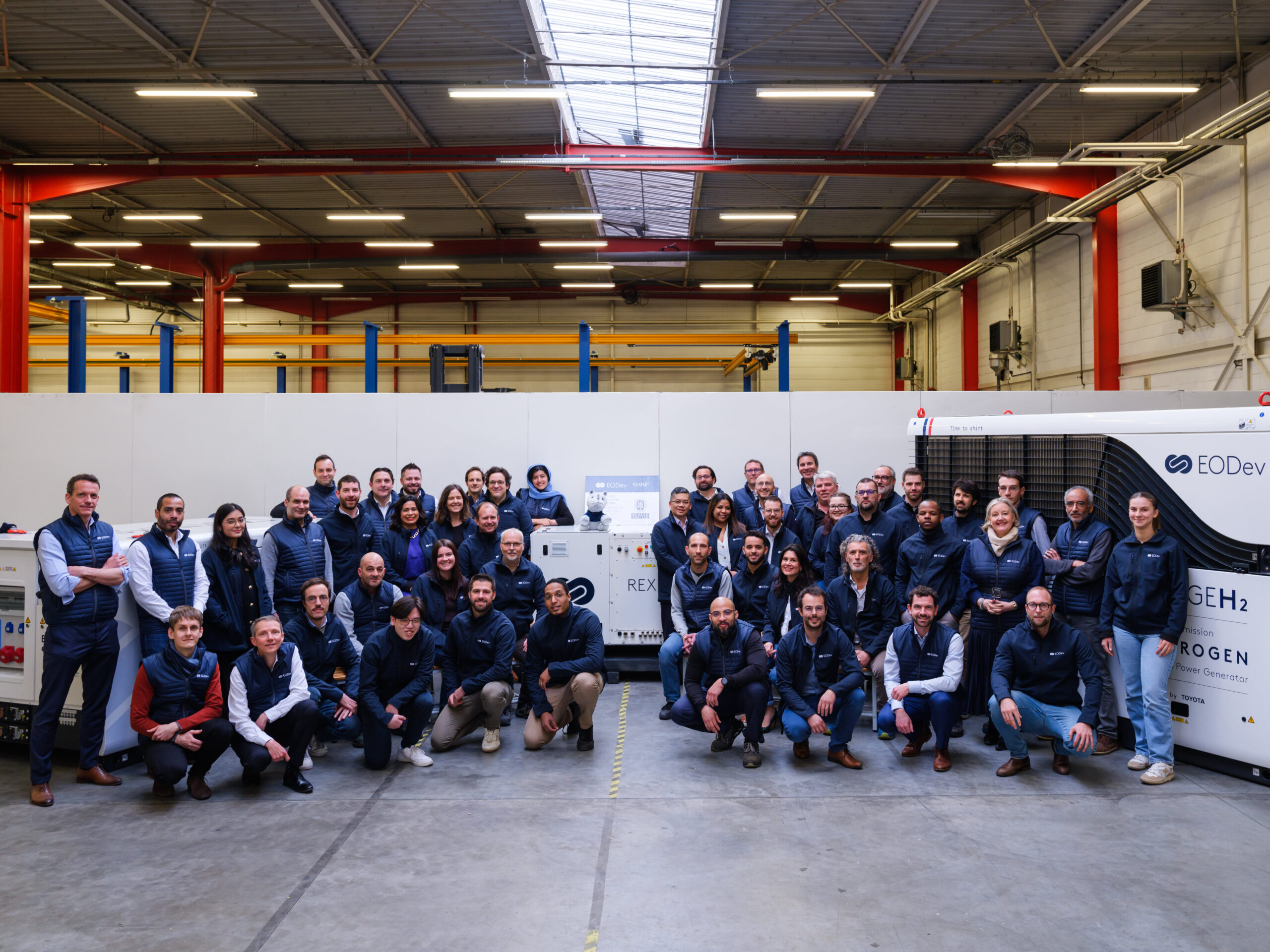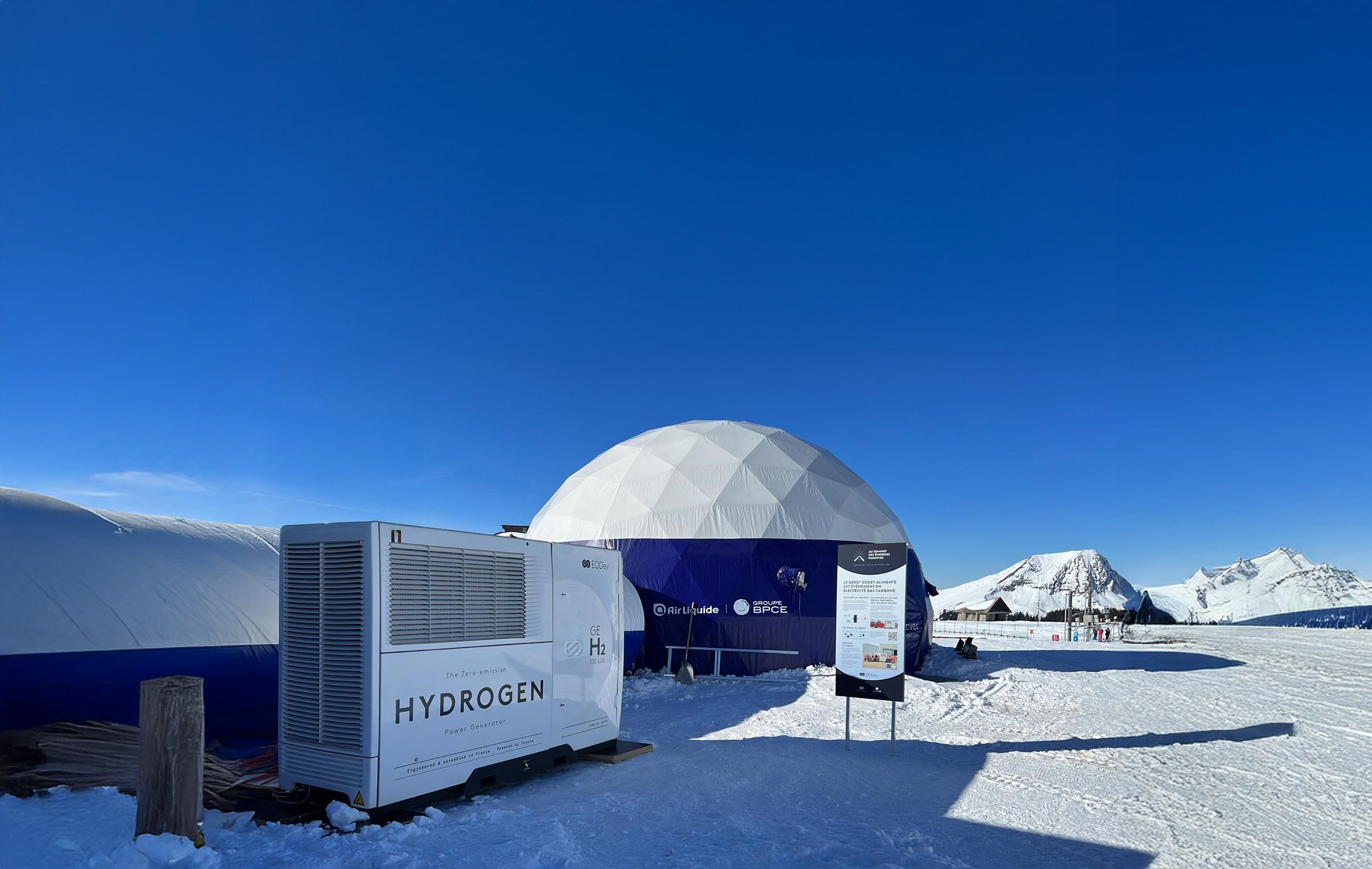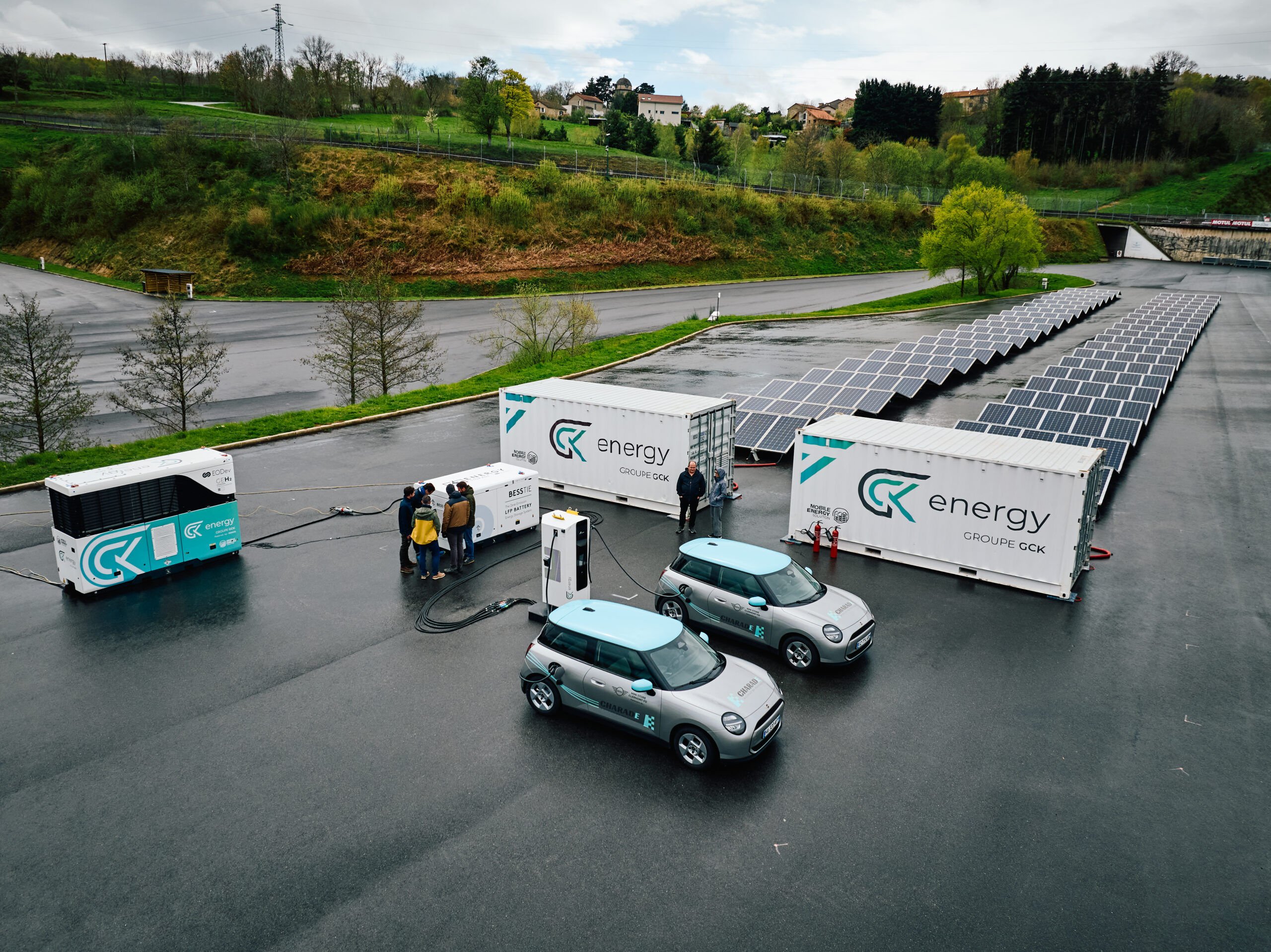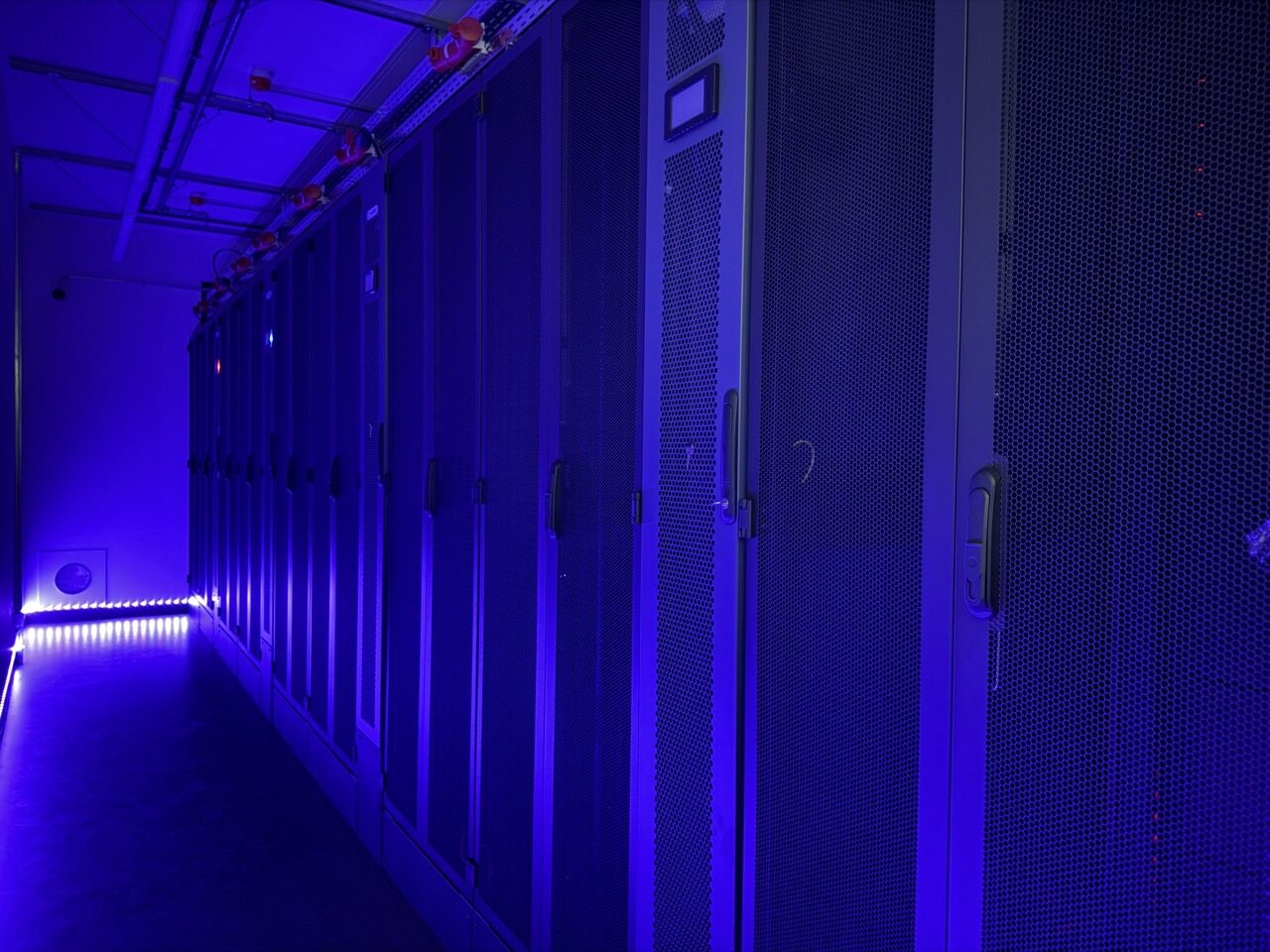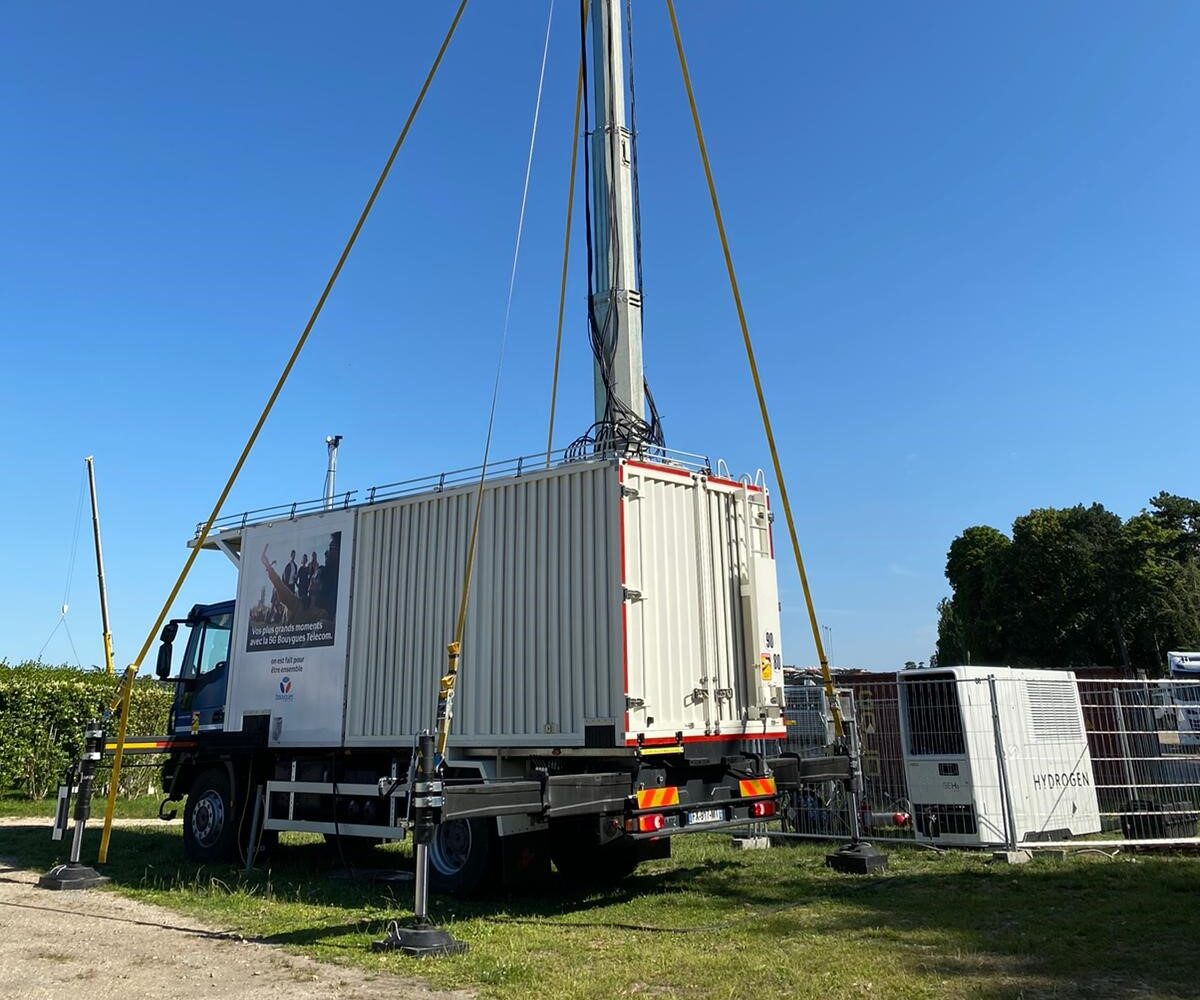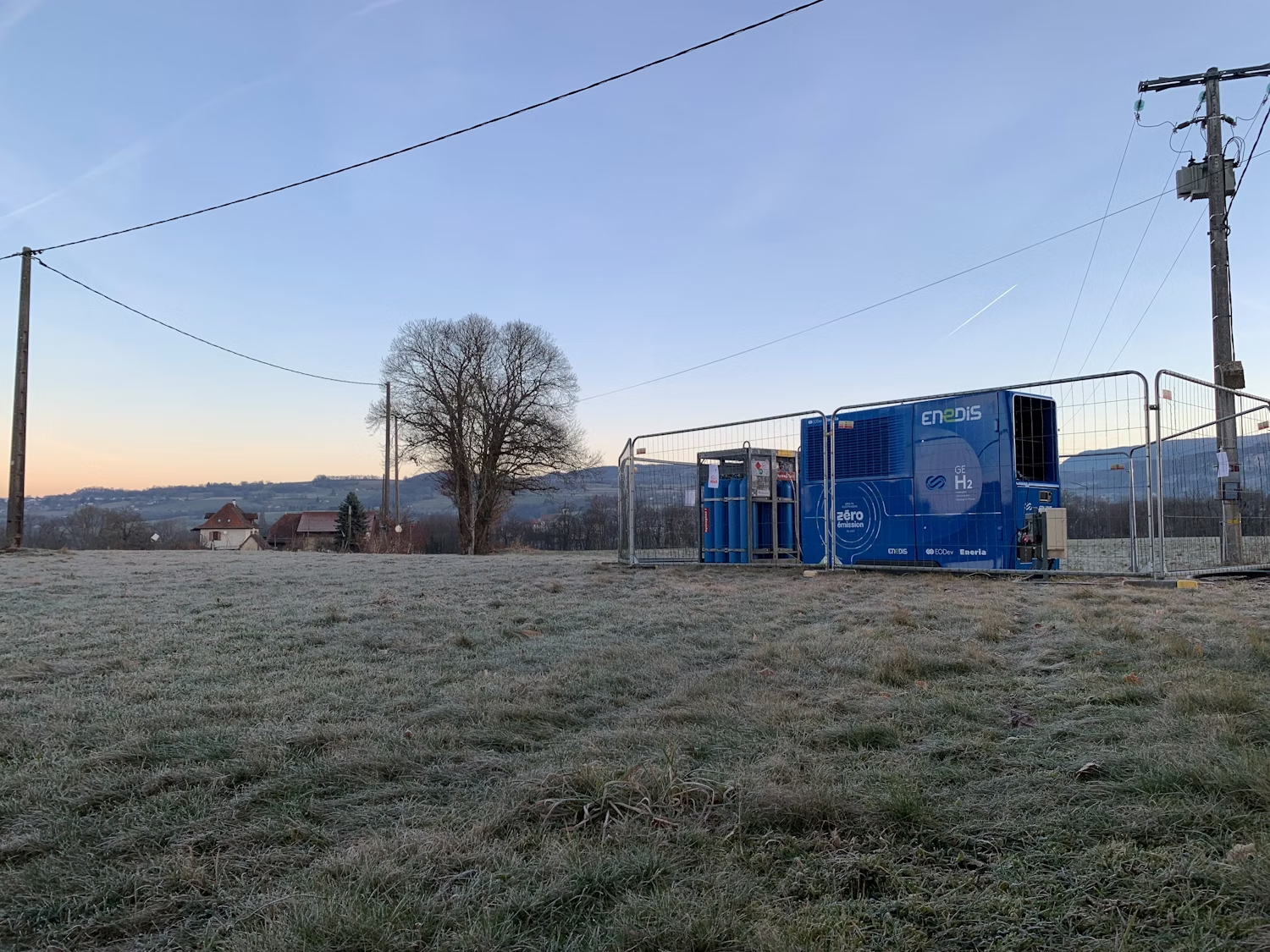Ideal for off-grid sites, emergency power, and mobile energy needs, the GEH₂ provides clean electricity—anytime, anywhere. Experience the future of sustainable energy with a portable, zero-emission, and high-performance solution.
A sustainable & mobile energy source

Zero Emission
A sustainable energy production solution
Our solution rejects no CO₂, NOx or other particulate matters. It filters the ambient air and rejects only heat and water vapor.
Connected
Real-time monitoring of energy production
The GEH₂ enables real-time monitoring of its energy production, early detection of maintenance operations and notification of technicians thanks to its 4G-connected system.
Efficient
Improvement of energy efficiency
Thanks to its hybrid fuel cell and battery system, the GEH₂ offers energy efficiency of around 50%.
A compact, sustainable hybrid power pack
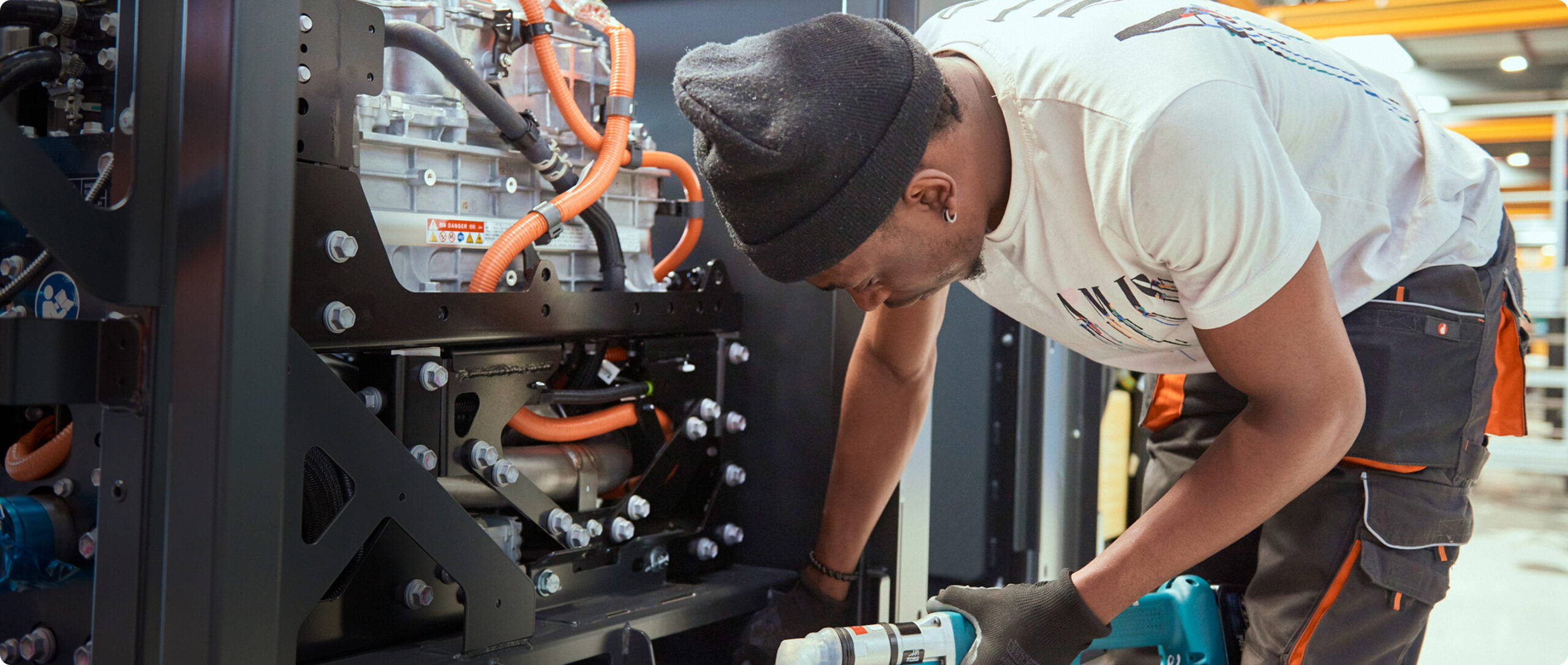
Efficient
Performance and reliability of its battery
The GEH₂ is a hybrid solution that combines its battery system with Toyota’s latest generation 70kW fuel cell making it the most reliable electro-hydrogen generator on the market.
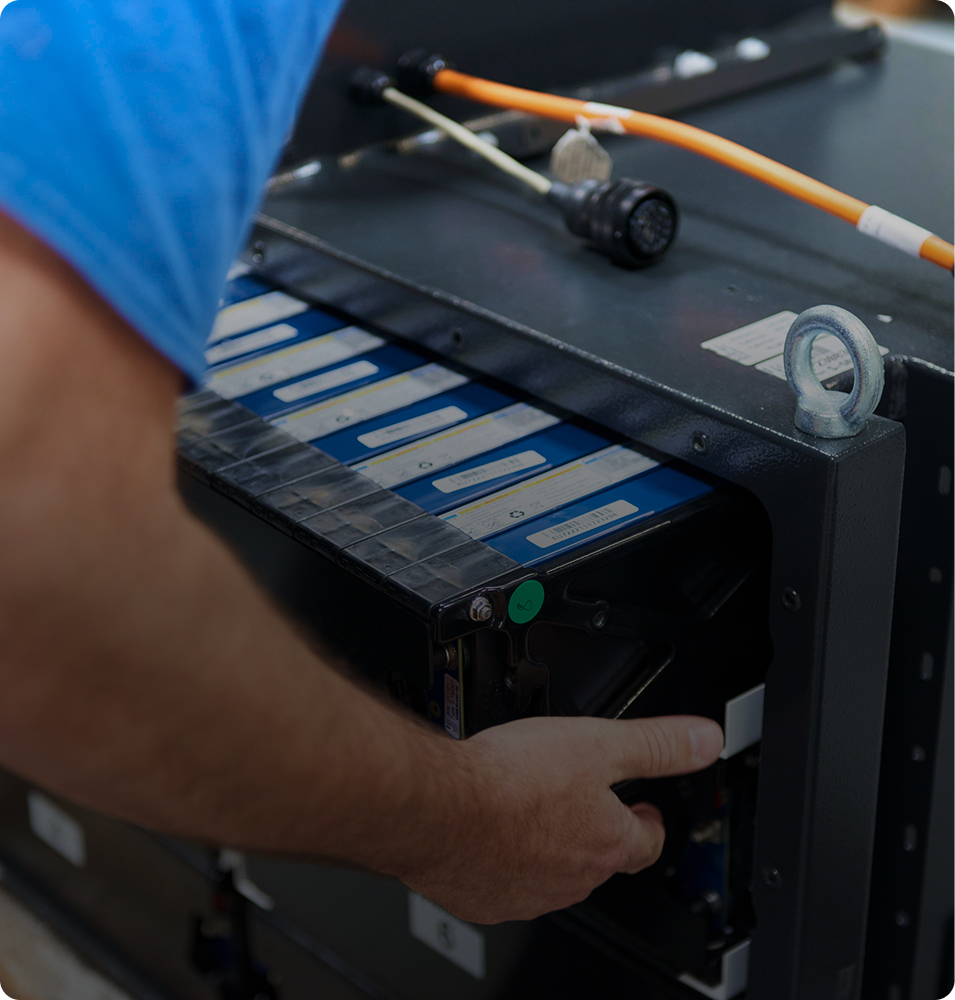
Sustainable
A sustainable battery made in France
The group integrates a battery system made in France by our subsidiary EVE System, which specializes in system electrification. It has the particularity of being made up of different modules that are screwed together rather than welded, thus guaranteeing its repairability and durability.

Quiet
A very quiet system
The GEH₂ makes little or no noise. Compared to a diesel generator, at full power its cooling system generates 65 decibels, the equivalent of a conversation, guaranteeing a quiet environment for both on-site personnel and any local residents.

Connected
Intelligent and connected
With EODev Connect, the group provides real-time information on its performance and hydrogen levels, and anticipates maintenance operations. Connected via 4G, it offers continuous monitoring on a dedicated platform.
A mobile, intelligent and efficient system
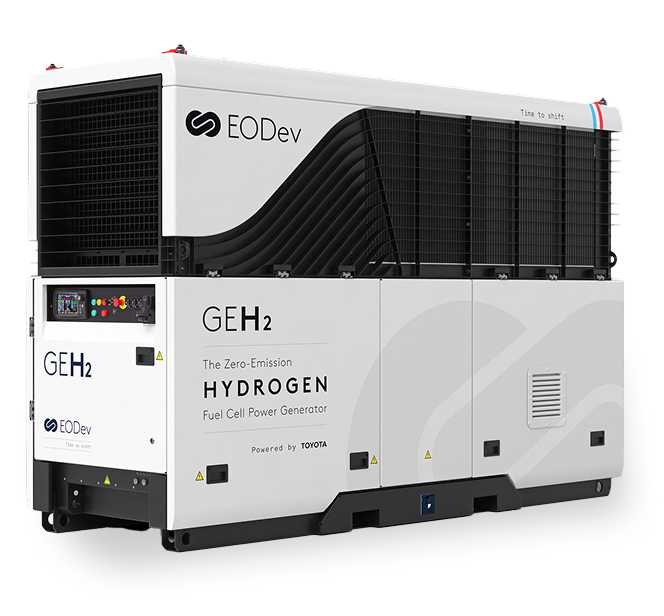
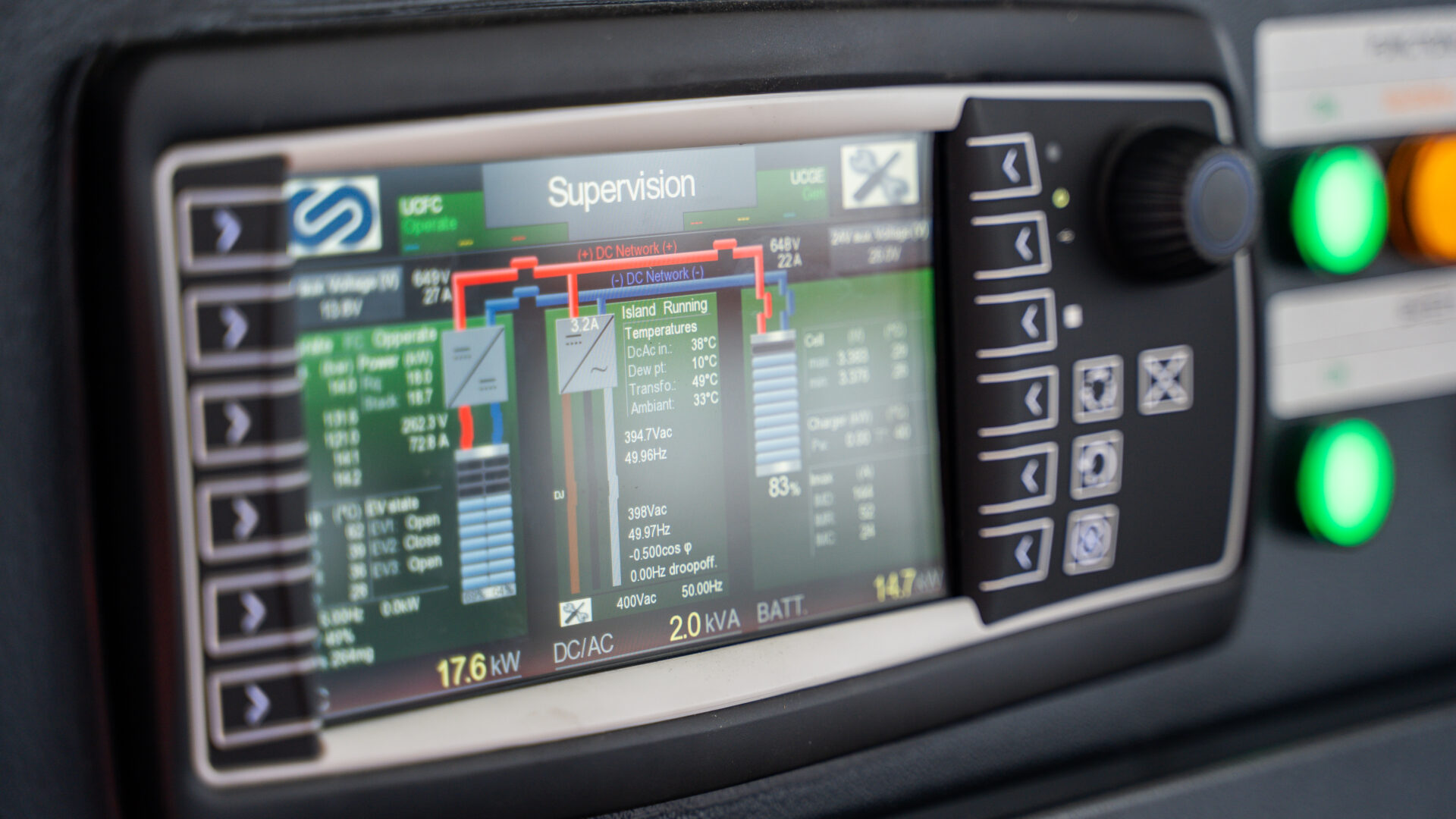
An interface for monitoring machine operating data and simplified parameterization.
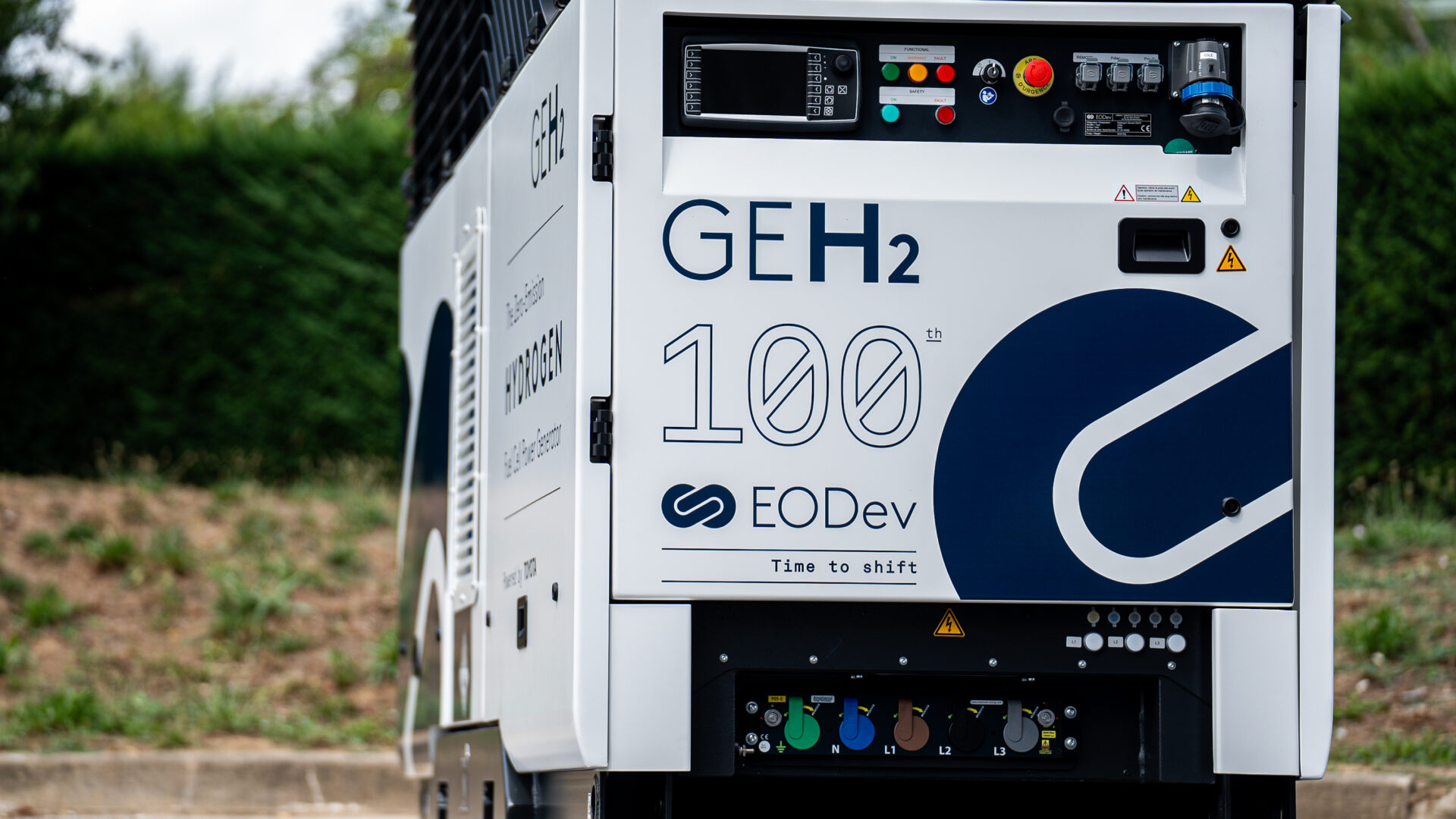
The group has five sockets for quick and safe connection.
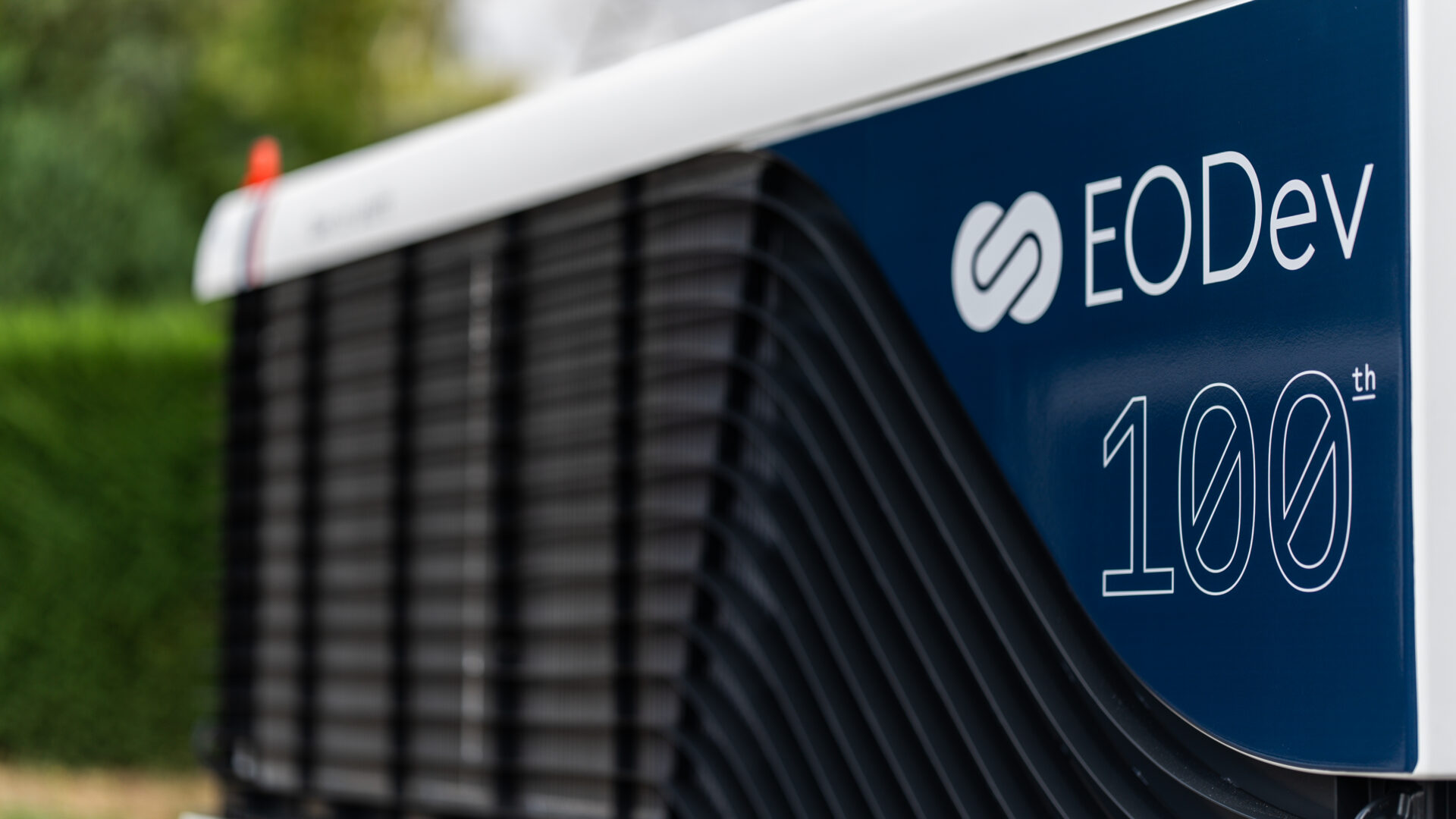
The GEH2 features an efficient, silent air-cooling system for use up to 45°C degrees outside.
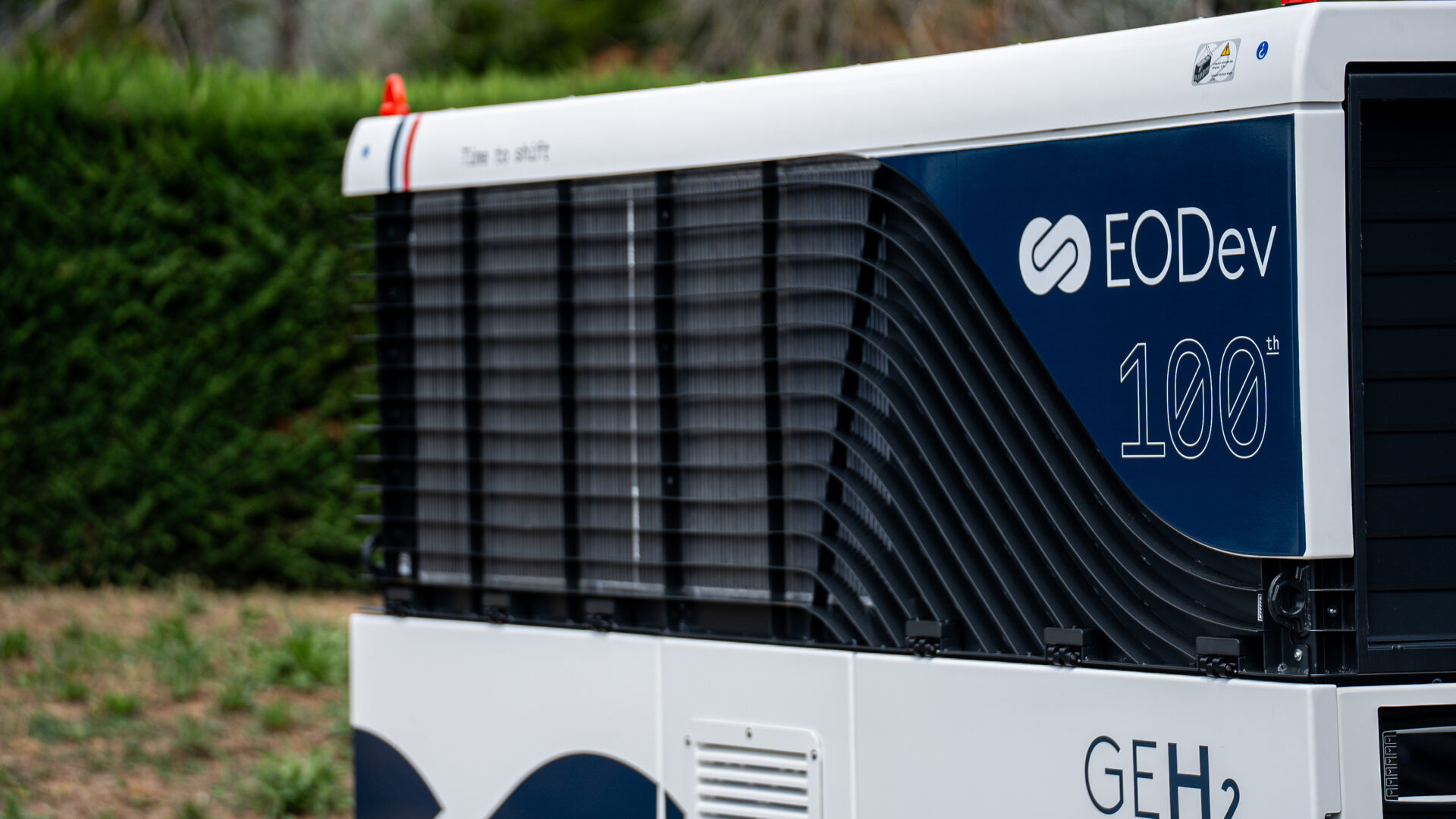
Mobile, the group can be handled by crane in complete safety, thanks to its attachment system via four slings on the roof.
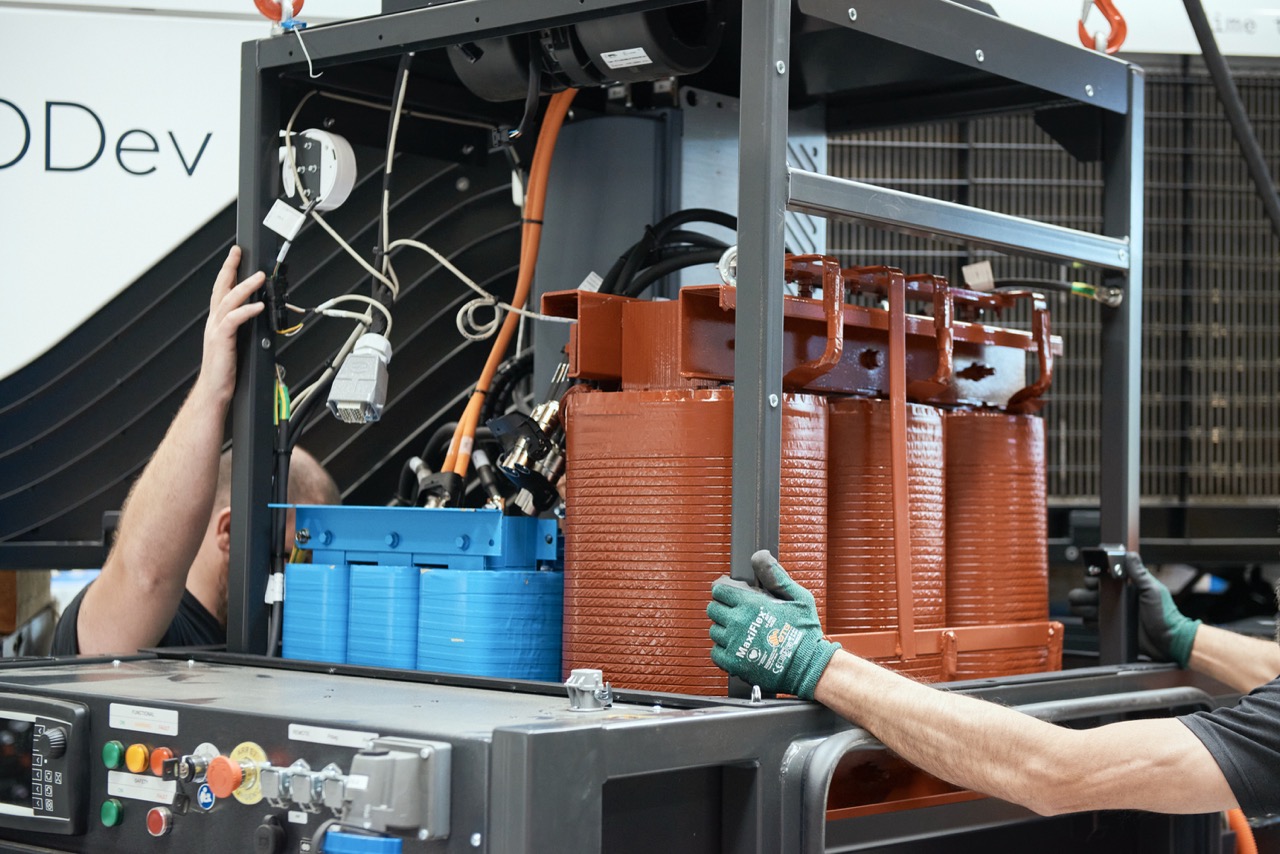
The GEH2 is equipped with a DC/AC power conversion system that transforms direct current into alternating current.
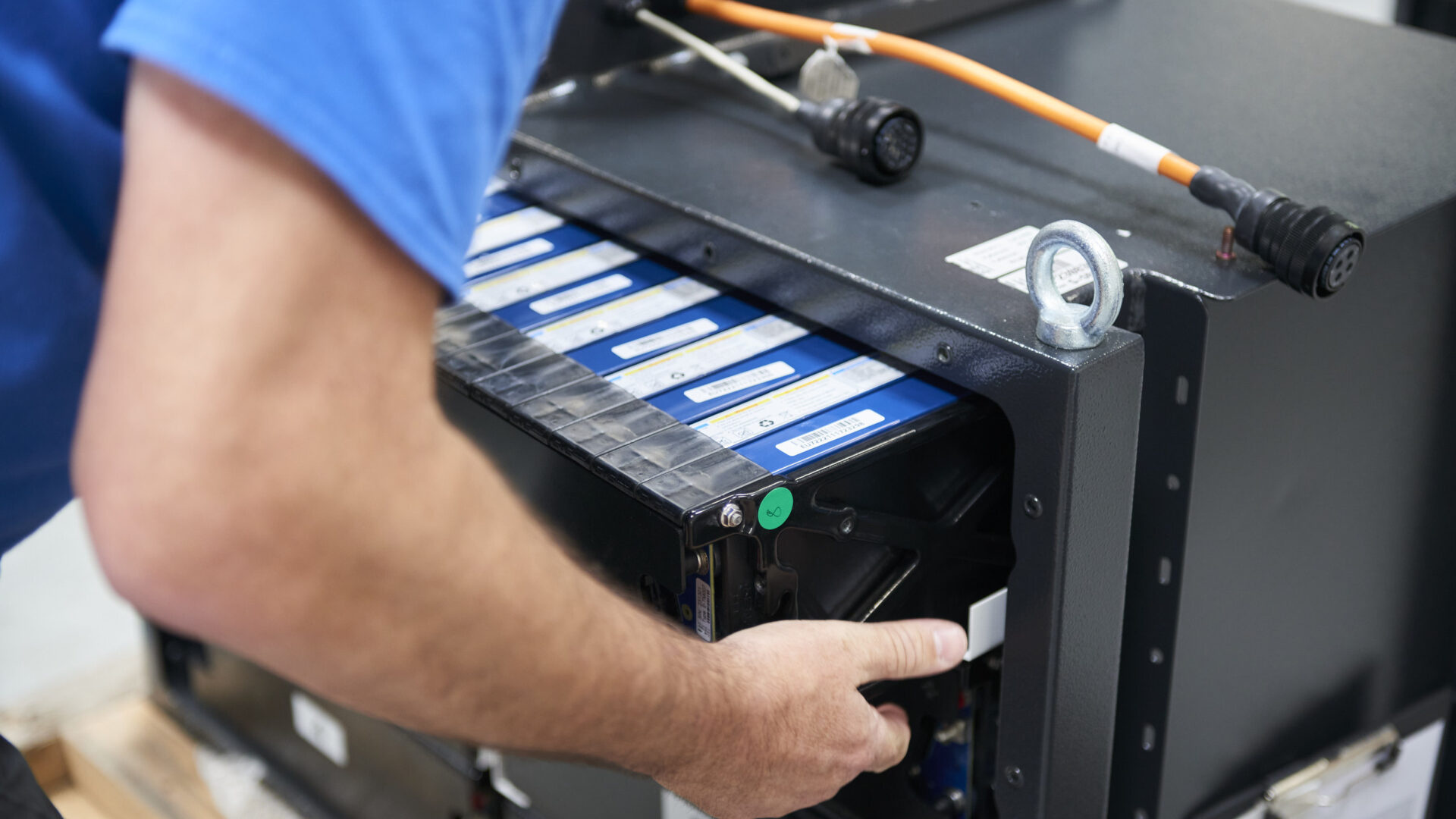
With capacities ranging from 44 kW to 62 kW, the GEH2’s Lithium Iron Phosphate battery enables the generator to absorb peaks in power demand instantly.
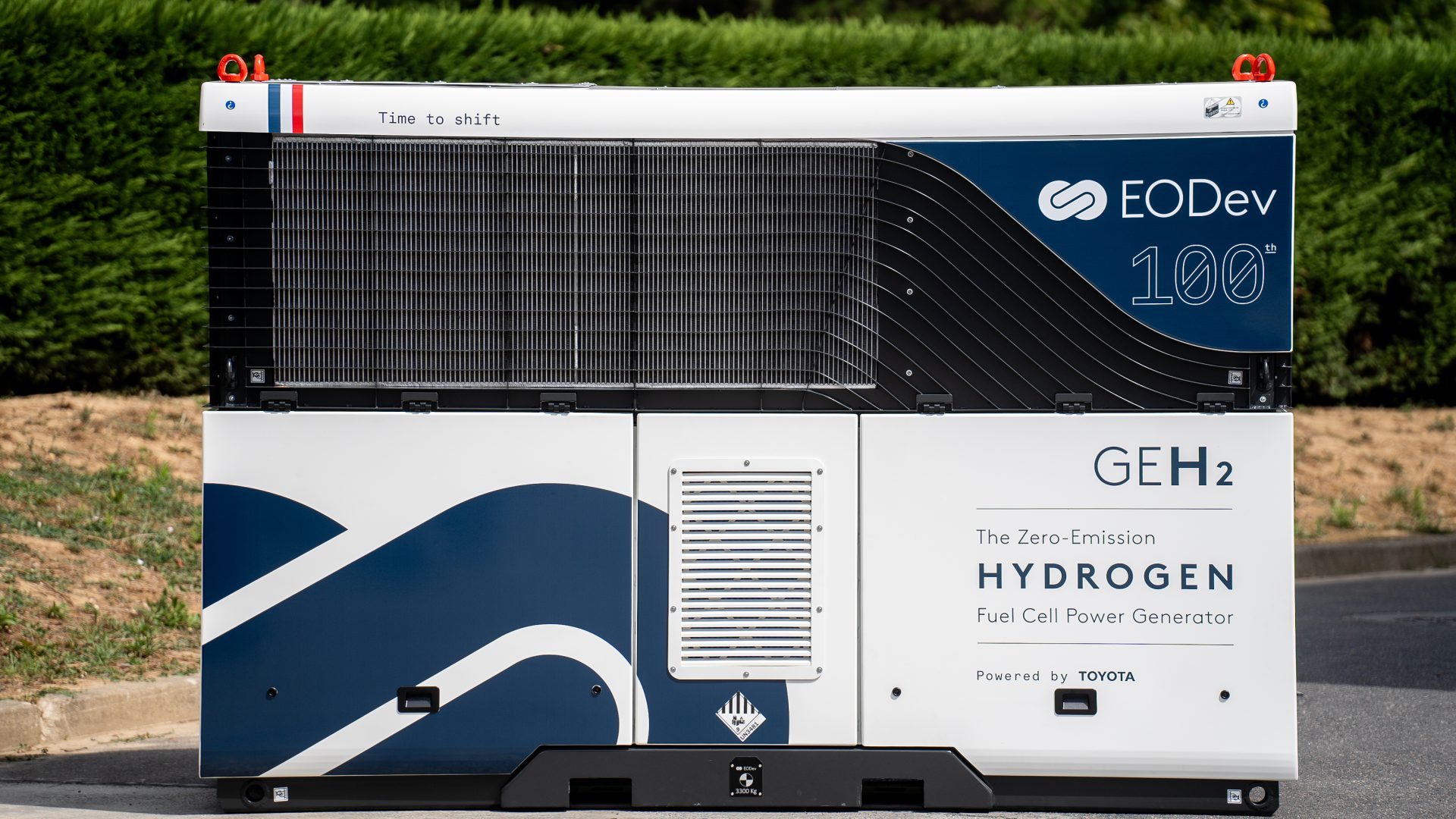
Chassis equipped with four easy-access lashing rings, forklift-transportable.

The group is equipped with Toyota’s latest-generation fuel cell, the same one used in the Mirai since 2014, a guarantee of quality for your applications.
Power
110 kVA/88kW ESP
100kVA / 80kW PRP
Output voltage
400 VAC / 480 VAC
Frequence
50 Hz – 60 Hz
Temperature of operation
-10°C à 50°C
Dimensions
3300 x 1100 x 2252 mm
Weight
3.4 tons
Download the on-line brochure
Smart technology for simplified management

Made in Europe
Local production
The GEH₂ is produced in France with components sourced mainly from neighboring countries, for the sake of quality and environmental impact. The materials selected ensure that its footprint is kept to a minimum over its entire life cycle.
70% durable
A 70% recyclable solution
Thanks to its modular design, the GEH2 is one of the few generators to offer a high component recyclability rate and simplified maintenance.
Aftersales Support
Reliability, quality, and durability are the core values driving the experts of the Blue Tech Energy Crew : our technical support team. They support you at every stage with streamlined management and a turnkey offer that includes administrative assistance, training, and on-site maintenance.
